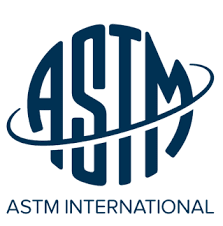Just found this...
The EPA granted the ATM based upon the ASTM 3053. The group working for years on the ASTM 3053 included state, regional, Federal air regulators, test labs and a select few manufacturers. I was part of that committee and attended 100% of the meetings.
Subsequent to the State of Alaska raising concerns about the method, industry began working late last year with EPA to refine and address any shortcoming identified by ADEC (Alaska). You see ASTM methods are consensus based are therefore able to be improved upon.
Industry has 95 cordwood tested and certified wood heaters and 60 or so M28R crib fuel certifications. Industry manufacturers spent right at $2.5M certifying those 95 heaters. What's at stake, not the tax credits, because they are based upon the official test report efficiencies.
What is really at stake, 7 years of data, very costly data, that was to be part of the FRM development. Without data, credible data, the FRM is delayed even further.
M28R was never intended to represent real world emissions numbers. It was developed to remove as many variables as possible so that when a consumer looks at stove specifications they are as closely as possible represented across the product category.
I was an ardent opponent of having more than one method! Confusion in the market place is already compounded by marketing messages. Adding additional variability was not and will never be what's best for the consumer.
Now, all the manufacturers will test to M25R. So, we return to square one. Most unfortunate because industry was open to suggested improvements of the method and still are. However, after having the rug pulled out from you, it's hard to buy in again to another ATM. EPA has acknowledged this challenge going forward.
Lastly, I want to clarify the point about certifications. EPA did nothing wrong. They are conducting an internal audit and if they finding any shortcomings they will address them.
When a manufacturer tests a stove, a test report is generated. As part of the request for certification, manufacturers, test labs and third party certifiers all attest with signatures, the test report in honest and complete. EPA's office of Enforcement & Compliance's job is to verify that all those signatures are in place as required by law. We are a manufacturer. We had a few i's not dotted and a few t's not crossed in our test reports. That is OUR FAULT and the lab and the third party certifiers. NOT EPA.
The real upshot of this is most of the "deficiencies" identified by EPA mean nothing to the airshed. Certainly there were a handful that were related to fuel loading protocols, fuel orientation etc., but there are no data to suggest these even effected emissions.
Each of you should read the comments filed during the 2015 EPA promulgation. Many of these factors and possibilities were identified prior to the rule going final.
Manufacturer certificates are valid for 5 years. EPA can, when asked, elect to extend the expiration date in for another 5 years. Basically a renewal. However, they are making it clear that any such certificates issued for the Cordwood ATM's will not be renewed.
About 6 of them will expire this year, 20+ next year etc, until all 95 have expired.
Thanks for the opportunity to provide additional clarity on this subject.
BKVP

 forgreenheat.blogspot.com
forgreenheat.blogspot.com

